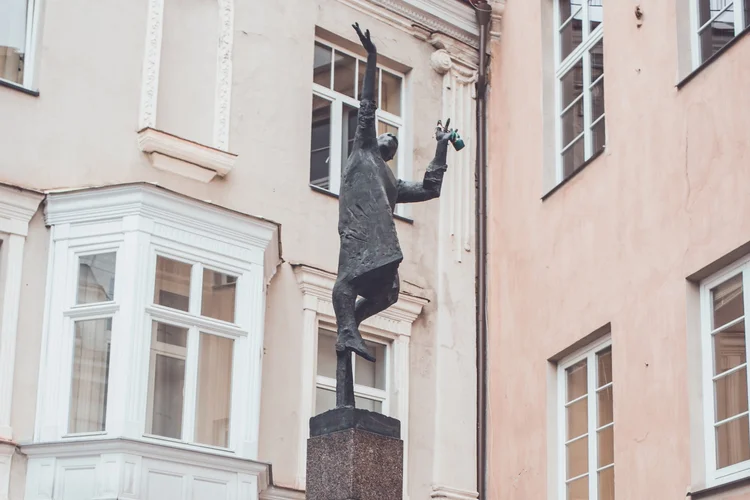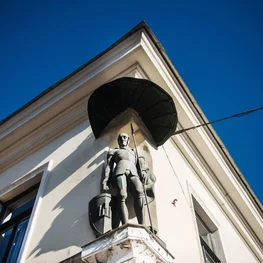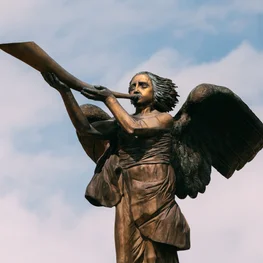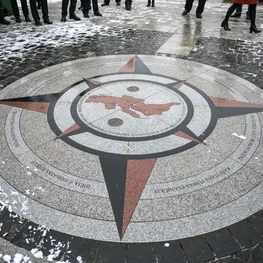Statue of the Lamplighter

In short
A strange statue standing near the Bell Tower on šv. Jonų Street is the work of Vytautas Nalivaika, who created it as a student of the Art Institute (now Vilnius Academy of Arts).
Vytautas Nalivaika’s statue of the Lamplighter depicts a man raising a light to illuminate the night and give people more courage. The Lamplighter's figure is placed on an unusually high pedestal. The image of this sculpture is also seen on a publication presenting Vilnius as the European Capital of Culture.
The sculpture looks particularly mysterious in the evening, when the streetlights are lit. In 2008, an unknown street artist drew a shadow appearing at a certain time of the day of the statue on a nearby building.
Brief History
You won't see anything unusual with this statue. It simultaneously conveys the pace and simplicity of an extinct profession: the lamplighter.
The sculpture depicts a person at work in a long-lost profession, but until the end of the 19th century, lamplighters used to light gas lamps on the streets of Vilnius in the evenings.
In the first half of the 19th century, 15-20 lamplighters serviced the city-owned lanterns, while guards serviced private lanterns. For safety reasons, fire fighters were hired for this task. The services of lamplighters were still required even when gas lamps came into operation. Lamplighters hired by the gas company managed the gas lamps, while some 20 fire fighters managed the turpentine and kerosene lamps . On 22 October 1864, in Vilnius, 307 gas lamps were lit. Only the central part of the city, the Old Town and the main squares were illuminated using gas. Later, they were replaced by kerosene lamps, which almost reduced the cost of city lighting by half. The era of gas lighting ended at the end of the 19th century.



